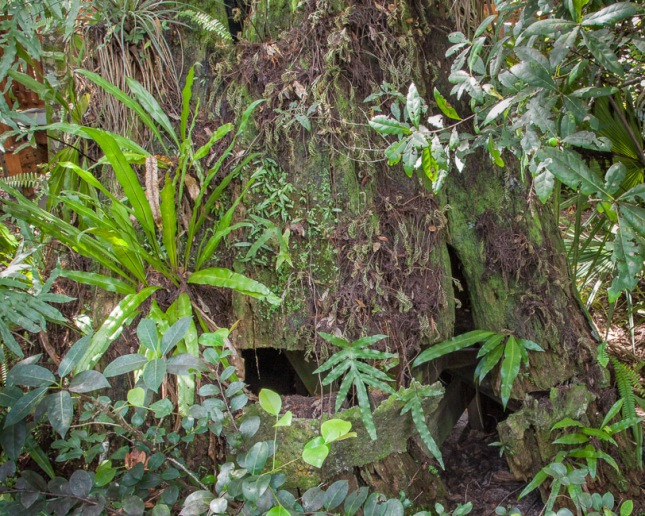Campyloneurum phyllitidis and other epiphytic ferns
(Campyloneurum references curved veins, and phyllitidis refers to an ancient name for a fern.)
Polypodiaceae
Today’s botanico-adventures were in the Cypress Creek Natural Area near Jupiter, Florida, working on John’s photo guide to the natural areas. There are small, old, concrete culverts and water control structures, long neglected and overgrown, now shaded hideaways for mosses and ferns. An exceptionally attractive fern perching on a mossy old dam is Strap Fern.
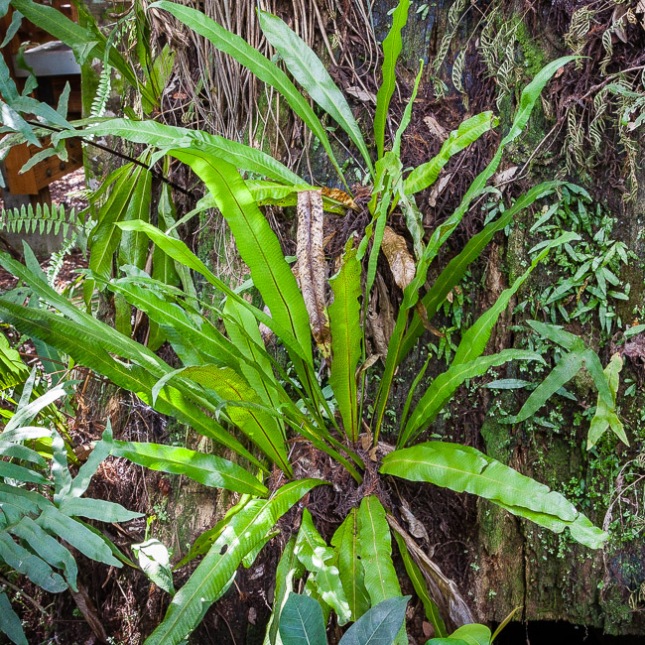
Strap Fern on a tree. All photos today by John Bradford.
Of course the fern did not evolve with decaying concrete to colonize, and its true calling is as an epiphyte on branches, rotting stumps, and most compellingly perched on cypress knees.
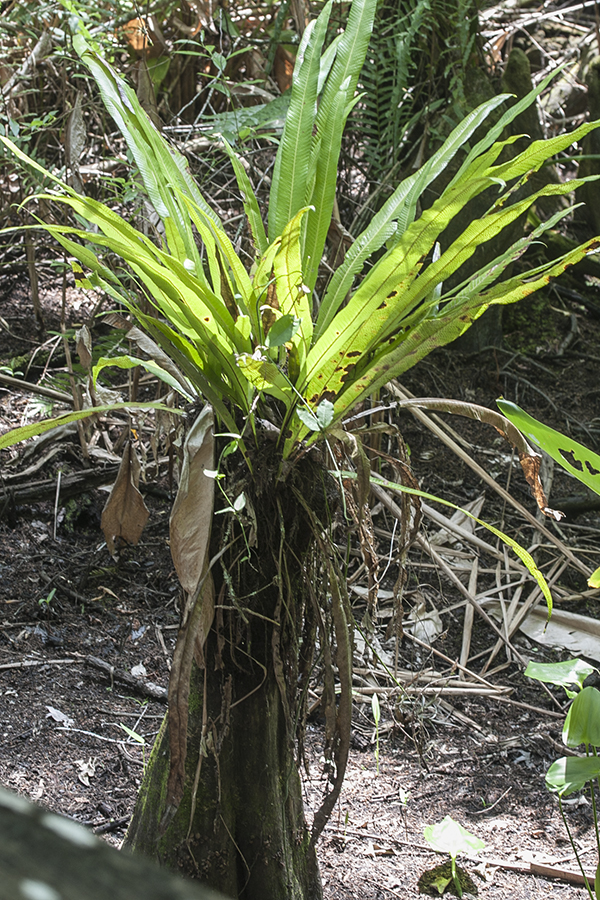
On a cypress knee.
Florida epiphytic (living up on other plants) ferns are prime examples of diversified adaptations to meet the same goal…survival with no roots in the soil. Most of the epiphytic ferns here have some oddball features to thrive high and dry.
Most famously, Resurrection Fern, in addition to tough leathery leaves and water-retentive scales, has the supernatural ability to go into suspended animation when dry, and then to “resurrect” on a rainy day like today.
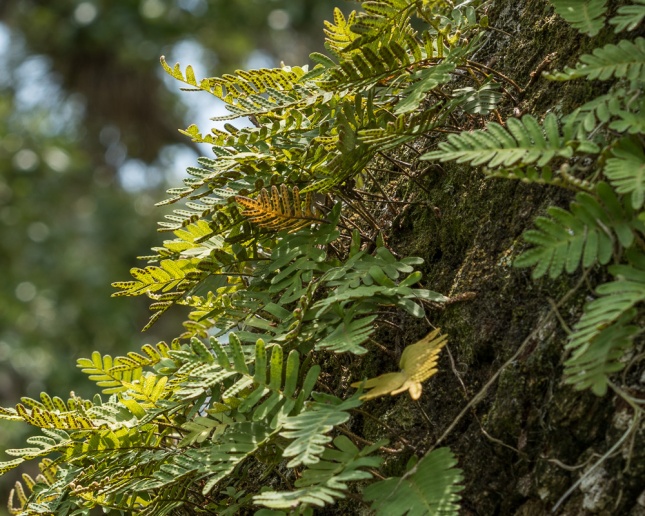
Resurrection Fern.
Most weird-lookingly, Shoestring Fern dangles from tree trunks, usually Cabbage Palms, as narrow strands like hair hanging from a head. I think its main protection from drying is having its stomates (pores where water departs from leaves) hidden in a groove under a curled leaf margin. With its stomates thus blocked, the fern retains its water, but then can’t cool evaporatively, which may be why the leaves are skinny “shoelaces” with huge collective surface area cooled in the breeze. Air cooled not water cooled. Less conspicuously, the fern roots penetrate the decaying tree “bark” and associated tissues aggressively, using the soft wet outer tree trunk as a substitute “soil.”
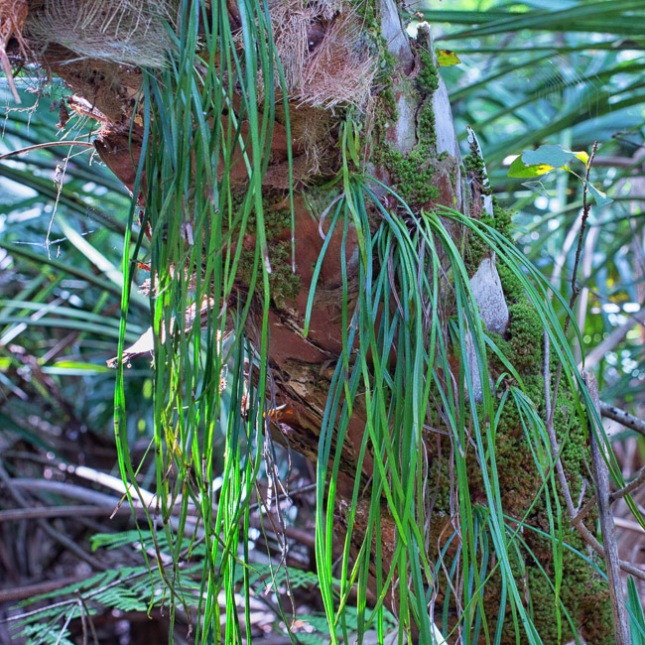
Shoestring Fern.
Most robustly, Golden Polypody Fern sends long thick rhizomes wrapping all over its host (usually Cabbage Palm) trunk. It seems to make up for not having a root system in the ground by making a large “root system” up on its host. Who needs soil when you can probe the moist earthy world of old palm leaf bases?
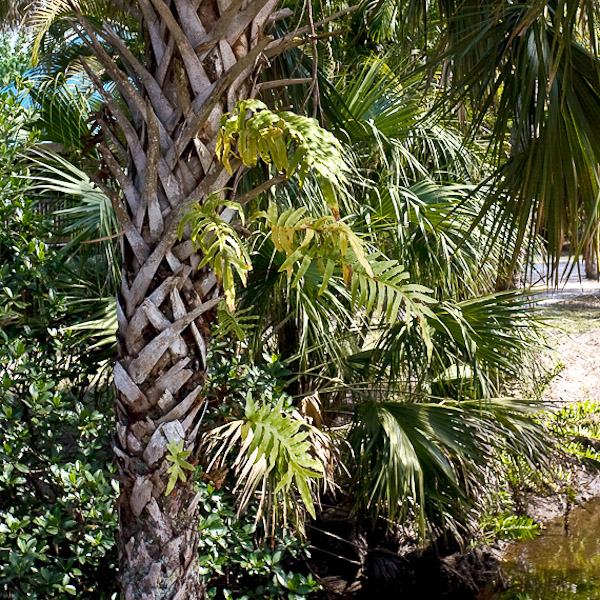
Golden Polypody
Today’s fern has its own peculiar adjustment to epiphytic life. We need a little history to understand. DNA study shows Strap Fern’s ancestry to be more-typical looking ferns with divided “ferny” leaves, whereas Strap Fern evolved undivided leaves, just long entire-edged straps, usually fairly erect.
Here is where we depart from specifics on Strap Fern and expand to broad generalities seemingly applicable to the present case.
Botanists think that ferns with funnel-shaped clusters of undivided leaves have evolved to funnel water and nutrients caught from the rain and leafdrip. A fern rooted in the soil can get water and nutrients it needs from the earth. Its biggest problem might be distributing enough light through its leaf system, which might explain why most shade-dwelling terrestrial ferns have frilly divided leaves…to let the light through to lower leaves.
But an epiphytic fern, by contrast, has lifted itself up into a brighter habitat where light is comparatively adequate, but needs to capture all its water and nutrients from above and direct them to its small and superficial roots. The leaves evolve consequently from lacey to strappy. Beyond ferns, many flowering epiphytes have that funnel shape: some anthuriums, bromeliads, and orchids for example.
